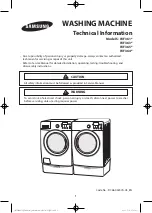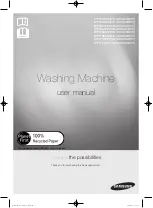
PULSAR
®
PLUS 55-S SUCTION BLAST CABINET
Page 6
© 2021 CLEMCO INDUSTRIES CORP.
www.clemcoindustries.com
Manual No. 30423
1.5.2 Media recovery and separation:
When
entering the reclaimer, dust and fines are first separated
from reusable blast media and drawn into the dust
collector. Next, the media is screened of oversize
particles and returned to the reclaimer hopper for reuse.
Dust and fines drawn through the reclaimer are trapped
on the outer surface of the dust-collector filter cartridge,
resulting in the exhauster discharging clean air.
1.5.3 Dust collector:
The dust-collector filter cartridge
is cleaned at regular timed intervals by a pulse of high-
velocity compressed air expanding against the inner
surface of the cartridge. The expanding air momentarily
reverses air flow through the cartridge, releasing dust
accumulated on the outer surface. The dust particles fall
away from the cartridge and into the dustbin for removal.
Pulse timing is controlled with the digital pulse timer and
air pressure. The pulse sequence automatically begins
when the exhauster is turned ON. There are times, such
as when seasoning the filter cartridge, that pulsing
should be OFF. To prevent automatic pulsing, turn the
pulse-pressure regulator located on the pulse reservoir
to 0 psi. Refer to Section 5.8 to set pulse pressure. If
pulse pressure is set to 0 psi, the timer is still functioning
but there is no pulse because pressure is turned off.
Pulse pressure should be left OFF (0 psi) until the
cartridge is seasoned, per Section 7.13.
Do not pulse a new dust collector or
replacement cartridge until the cartridge is
properly seasoned, per Section 7.13. Pulsing an
unseasoned cartridge can decrease the
efficiency of the dust collector and cause
premature cartridge failure.
1.6
Control-Console Functions – Figure 4
1. Blast-Pressure Adjustment:
The pilot pressure-
regulator adjust blast pressure to suit the application.
Refer to Section 5.1 to adjust blast pressure
.
2. Green Start Pushbutton Switch:
The button lights
up when power is applied to the cabinet. The pushbutton
does not light if the dustbin interlock is not engaged.
Pushing in the button turns on the cabinet light and
starts the exhauster. Other controls will not operate
unless the exhauster is running.
3. Red Stop Pushbutton Switch:
Pushing in the
button stops the exhauster and all other controls.
4. Blast-Pressure Gauge:
Displays blast pressure,
which is adjusted by the blast-pressure regulator, as
noted above.
5. Filter
Differential-Pressure
Gauge:
The
differential-pressure gauge measures pressure drop
(pressure difference between the clean and dirty side of
the filter cartridge) across the filter cartridge. The gauge
is the best way to monitor cleaning efficiency and dust
buildup on the cartridge. Refer to Section 7.12 to replace
the filter cartridge.
Plus
Pulsar
Figure 4
1.7
Cabinet and Power-Module Controls and
Functions.
Foot Pedal:
When the cabinet is set up and operational,
blasting begins when the foot pedal is pressed and
blasting stops when the pedal is released.
Door Interlocks:
The door interlocks disable blasting
when either cabinet door is open. To enable blasting, the
doors must be closed and the door interlock switches
engaged. Refer to Section 5.6 to adjust door interlocks.
Dustbin Interlock:
The dustbin interlock disables
blasting when the dustbin is removed or not fully clamped
in place. To enable blasting, the bin must be correctly
positioned and securely clamped. Refer to Section 5.7 to
adjust the dustbin interlock switch
Dust-Collector Pulse Pressure:
The pulse-pressure
regulator controls filter cartridge cleaning-pressure.
Lower pressure is needed when the filter cartridge is
newer and has only a light dust cake. Higher pressure is
needed to push the dust away from the cartridge when it
is heavily loaded with dust. Refer to Section 5.8 for
adjustment procedure.
NOTE: Pressure should be set
to zero (0 psi) until the filter cartridge is seasoned.
Dust-Collector Pulse Timing:
Pulse timing is controlled
with the digital pulse timer. The pulse sequence
automatically begins when the exhauster is turned ON.
Refer to Section 5.9 to adjust the pulse timer.
2
1
3
4
5








































